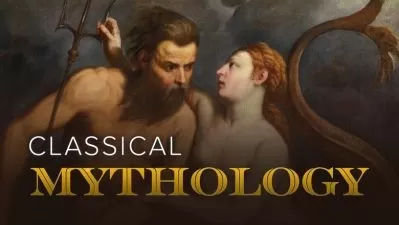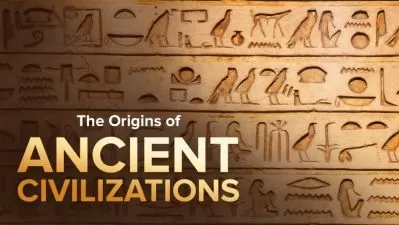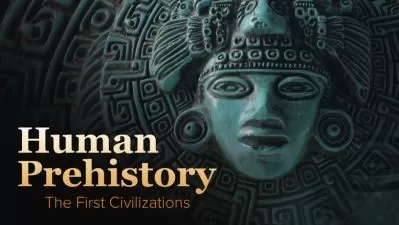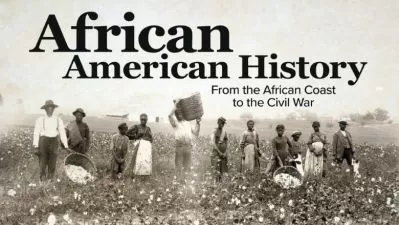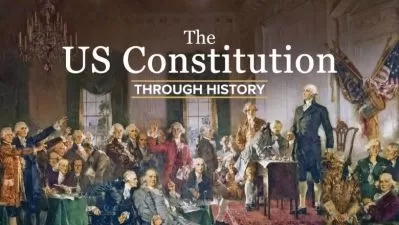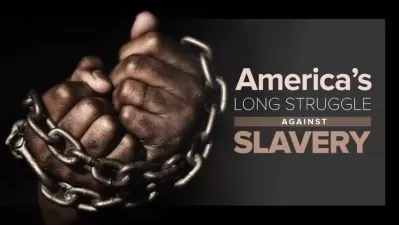War in the Modern World
David R. Stone
11:21:33
Description
World War II was a formidable conflict that engulfed more than 50 nations, many of them world powers. While it ended with peace, the global conflict culminated in massive human and material costs. The Soviet Union lost millions of soldiers and civilians. The United Kingdom sustained relentless bombing campaigns by Axis air forces. And Japan saw the destruction of two major cities via atomic bomb: Hiroshima and Nagasaki. Across the world, whole cities were leveled and millions of people—Axis and Allied, civilians and soldier—were displaced or killed.
Landscapes and populations weren't the only things that changed, though. A new world order emerged when the ink on the peace treaty dried in 1945, altering borders, ushering in new geopolitical realities, and leaving the West to contend with a new enemy: the Soviet Union, a communist empire intent on spreading its ideology and influence across the globe. These changes, along with the introduction of innovative but extremely destructive weapons like nuclear bombs and drones, ushered in a new kind of warfare that has characterized violent conflicts across the globe for the last three-quarters of a century.
In 24 masterfully designed and clearly presented episodes, War in the Modern World explores the new face of war. US Naval War College professor David R. Stone is your expert guide. A scholar of Russian military history, he is well-versed in the strategy, policy, and history behind modern conflicts and wars across the globe. With David in the front seat, you will examine modern war through modern conflicts, exploring decades of violent conflicts between and within nation-states. You will define insurgency and counterinsurgency warfare as well as the strategies that underlie both. You will learn about the weapons that fundamentally changed how countries and rebel groups fight. And you will understand how highly localized civil and insurgent conflicts became the new terrains on which great powers wage war.
Strategy and Weapons: The Characteristics of Modern War
How are wars fought in the modern era, and who actually fights them? Do tanks, brute force, ground troops, and submarines still matter when it comes to war? Should we be worried about the threat of cyberwar? What kinds of strategies do insurgent and counterinsurgent groups follow when they are engaged in violent conflicts? In this new world, weapons and new technologies changed the rules of the battlefield and local battles and proxy wars have become the new military frontier. As this course demonstrates, a third world war could be eminent—and how the “McDonald’s theory” could play a role in peacekeeping.
With David Stone at the helm, explore the characteristics of modern warfare. Dive into the dominant theories that try to explain why and how war changed after 1945. Become familiar with the modern weapons—nuclear bombs, IEDs, the Kalashnikov assault rifle, guided missiles, drones, and cyber attacks—that have transformed modern warfare and have empowered rebel groups on virtually every continent. Evaluate why direct confrontation between world powers is extremely unlikely nowadays. Examine the ideas behind insurgency, like Mao Zedong’s theory of revolution and the foquismo theory, typified by left-wing revolutionary fighters like Che Guevara and Fidel Castro. See how empire and colonialism fit into modern theories of war. Understand why counterinsurgency warfare is so much harder and more costly than insurgent warfare. And determine what a major war between the United States and other world powers might look like in the future.
Modern War through Modern Conflicts
War in the Modern World is also a crash course in military, political, and international history. You will dive into the events that followed World War II and how they gave rise to major confrontations on the world stage. You will understand the major causes and consequences of contemporary wars. You will learn about the individual personalities that have defined violent conflicts since 1945, from Joseph Stalin to Saddam Hussein. And you will contextualize what you’ve learned about the shape of modern war by diving into specific conflicts like:
- China’s Civil War. Explore the insurgent strategies used by Mao Zedong, a former peasant turned communist revolutionary, to overtake mainland China, and examine the extent to which great powers like the USSR and the United States became involved in the conflict.
- The Korean War. Understand why America's war on the Korean peninsula ended in temporary armistice and not peace, a clear departure from the definitive peace treaties that ended both world wars.
- The Arab-Israeli Wars. Today, Israel has a contentious relationship with its Arab neighbors and the Arab population living inside of its borders. Explore the history behind the complicated hostilities, and how they have manifested in persistent violent conflicts in the Middle East.
- The Cuban Missile Crisis. Nuclear weapons and the idea of mutually assured destruction changed the way great powers engage with each other on the world stage. See what it means when two nuclear powers—the United States and the USSR—wind up in a direct confrontation with each other.
- America’s Vietnam War. While the decolonization of Vietnam was unpleasant for France, America’s Vietnam War dragged on for decades, culminating in intense political opposition at home and military defeat in Asia. Dive into the conflict’s root causes, key players, and political impact back home in the United States.
- The Yugoslav War. How can ethnic tensions in a region explode into a major conflict that demands attention from the United States and other world powers? Become acquainted with the causes and consequences of the civil war in former Yugoslavia.
- Russia’s War in Chechnya. Imperial and territorial ambitions have been a source of violent conflict between nation-states for quite some time. But in the modern period, wars over territory and the populations that live there look different. Understand how by delving into the Russian Federation’s tumultuous war with a former Soviet colony Chechnya.
- The Iraq War. Counterinsurgency warfare—a fairly modern strategy—is extremely difficult. The United States’ war in Iraq demonstrates why that is the case. Explore the controversial war and what it meant for the United States to pursue regime change and democracy in the region.
War in the Modern World examines war conceptually, strategically, historically, and geopolitically. It takes a macro and micro approach, focusing on the broad contours of modern warfare conceptually and how violent conflicts have unfolded in real time after 1945. By studying warfare in the late 20th and 21st centuries you will expand your knowledge of world history, become better versed in current and international affairs, and be able to analyze and talk informedly about present and future conflicts. Overall, you will emerge a more engaged and informed global citizen.
More details
User Reviews
Rating
David R. Stone
Instructor's CoursesDavid R. Stone is the William E. Odom Professor of Russian Studies at the US Naval War College. He received his PhD in History from Yale University. He has written or edited several books on military history, including Hammer and Rifle: The Militarization of the Soviet Union, 1926–1933, which won the ASEEES Marshall D. Shulman Book Prize and the Historical Society Best First Book Prize. He is also the author of dozens of articles on Russian military history and foreign policy, and he is the expert for the Great Course World War II: Battlefield Europe.

The Great Courses
View courses The Great Courses- language english
- Training sessions 25
- duration 11:21:33
- English subtitles has
- Release Date 2023/08/20








